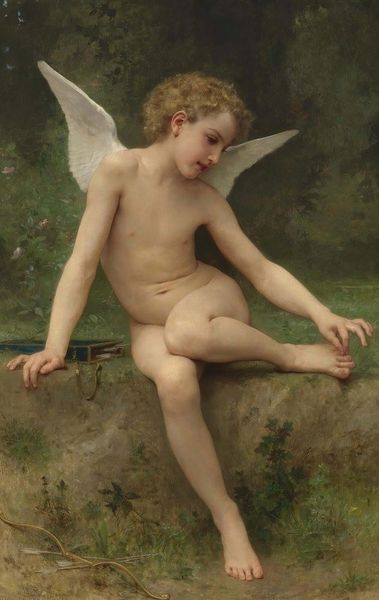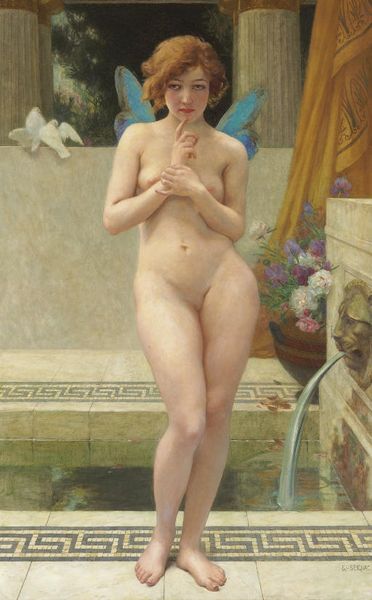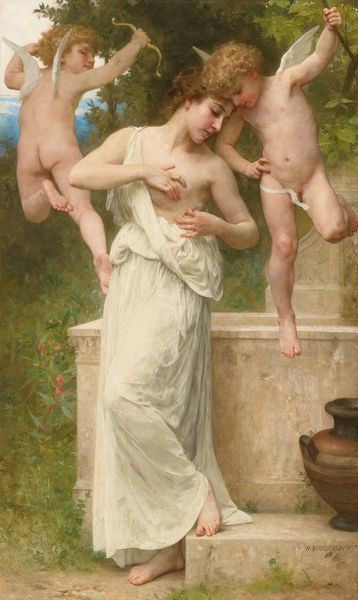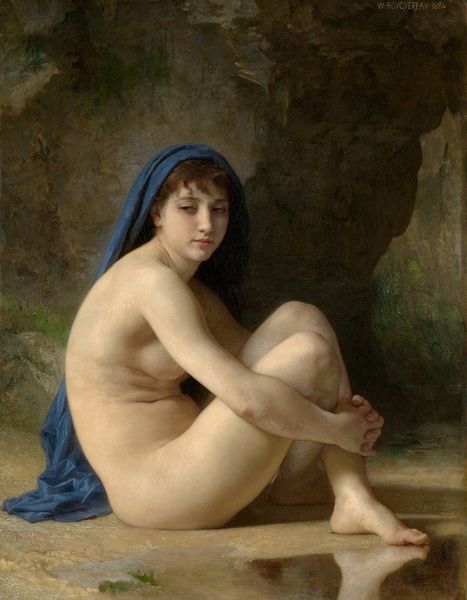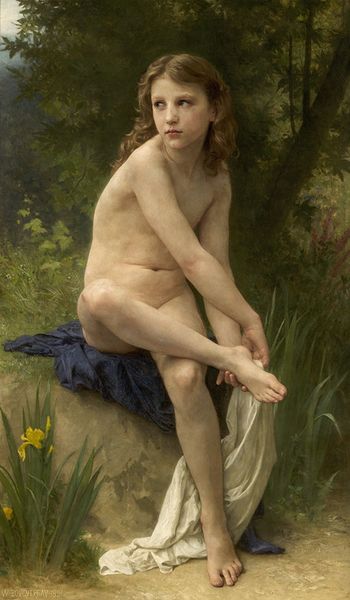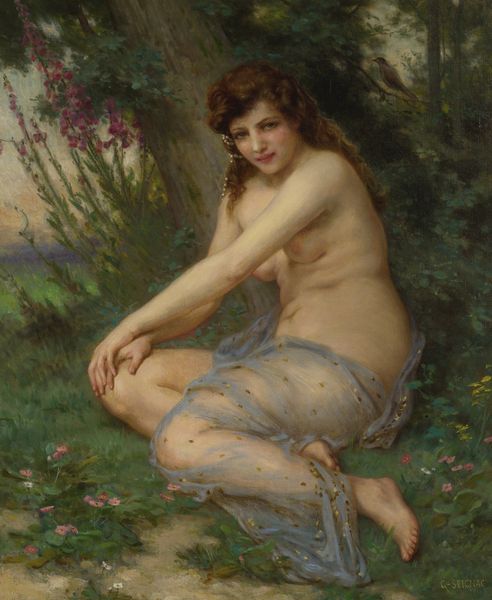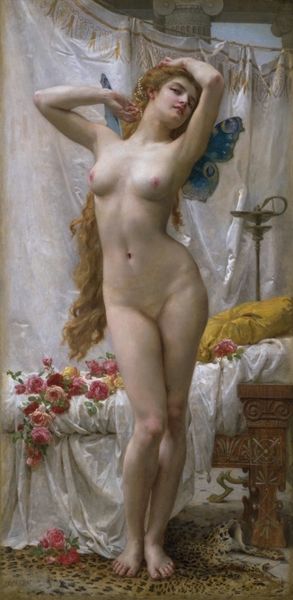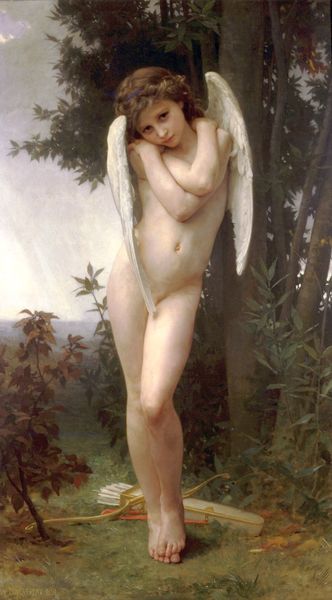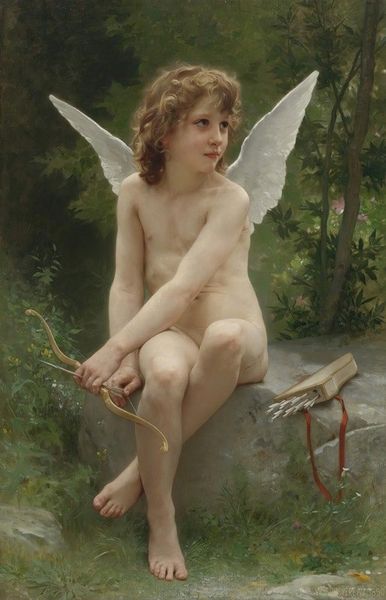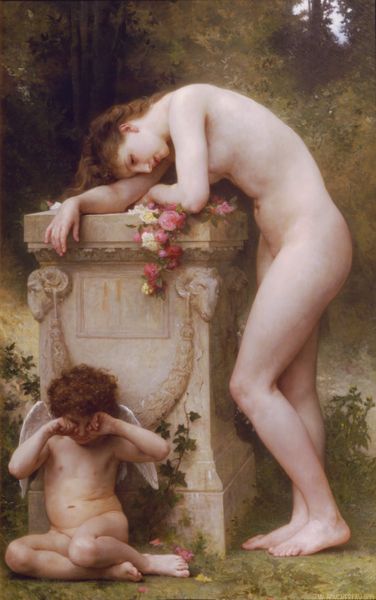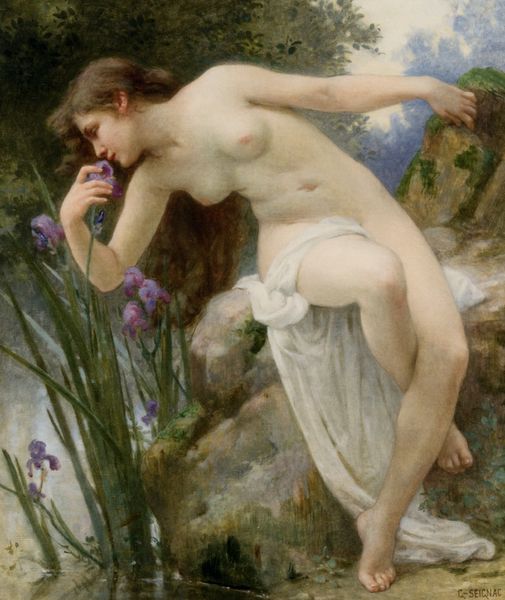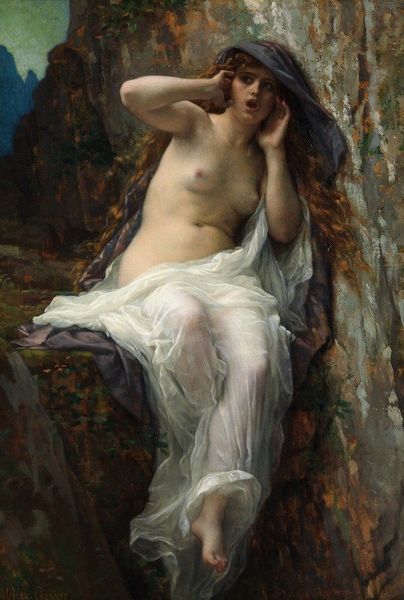
Copyright: Public Domain: Artvee
Curator: What strikes me immediately is the softness and innocence. There's an undeniable sweetness to the cherubic figure and the gentle lighting. Editor: We're looking at "L'amour au Papillon," or "Cupid and the Butterfly," a painting rendered in oil on canvas by William Bouguereau in 1888. It exemplifies academic art, particularly through its idealized and polished figuration. Curator: "Idealized" feels like a good word. I'm intrigued by this carefully constructed innocence. Considering Bouguereau's role in the official Salon system, it raises questions for me. Was he consciously reinforcing a particular vision of youthful, unburdened love for his primarily bourgeois audience? Editor: Precisely! The image promotes specific notions of beauty and sentimentality that were socially desirable at the time. The setting itself—a lush, idyllic scene complete with a classical fountain—further contributes to an idealized world, free from the gritty realities faced by many. Think about how these pastoral fantasies played into societal hierarchies of class. Curator: It's impossible to ignore how whiteness is centered in this narrative of love. This idealized form doesn't just ignore the socioeconomic, but it actively excludes other forms of representing beauty that go against a colonial mindset. How are racialized bodies received within the art institution during this period? Editor: Very good question. Works displayed at the Salon actively upheld existing racial biases, simultaneously exoticizing non-European figures and solidifying a supposed ideal of Western beauty. Even the classical allusions contributed to this by reinforcing a perceived link between European culture and some form of intrinsic virtue. Curator: So, while ostensibly about universal themes of love and beauty, this image is profoundly shaped by the socio-political forces and it upholds the beauty standards of its time, intentionally or unintentionally excluding many narratives. Editor: Absolutely. Examining this painting prompts a dialogue regarding whose love and whose beauty get valorized within public art spheres—and whose histories are consequently erased or marginalized. It urges a re-evaluation of these canonical works. Curator: That gives me so much more to consider about this cherubic figure now! Editor: I agree. Looking at it in light of the art market’s institutional structure encourages such a necessary reassessment.
Comments
No comments
Be the first to comment and join the conversation on the ultimate creative platform.
